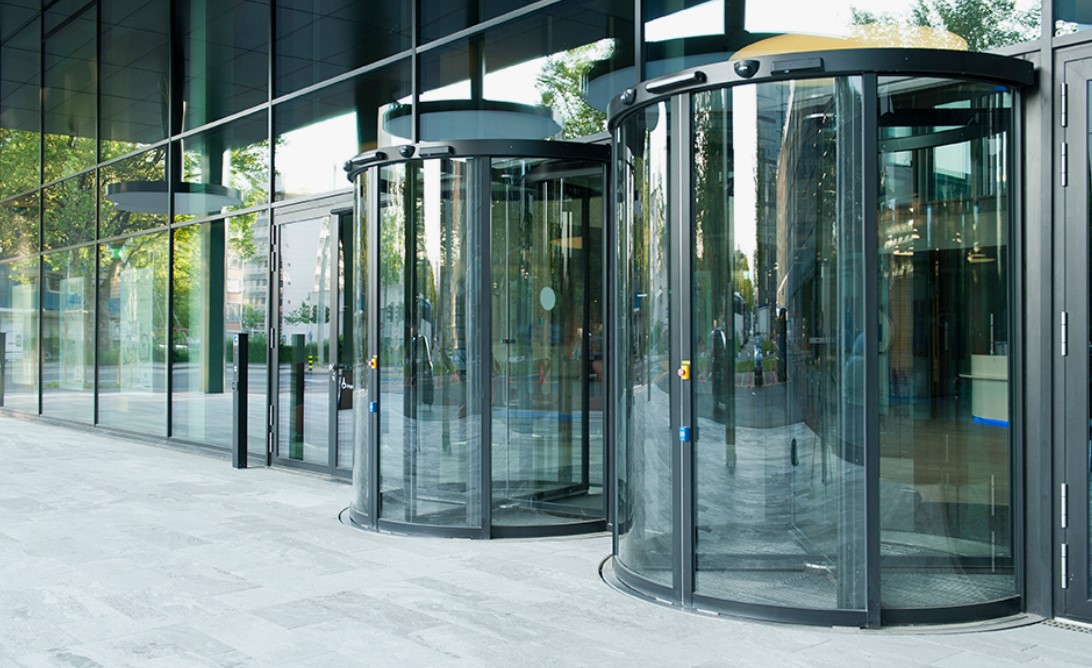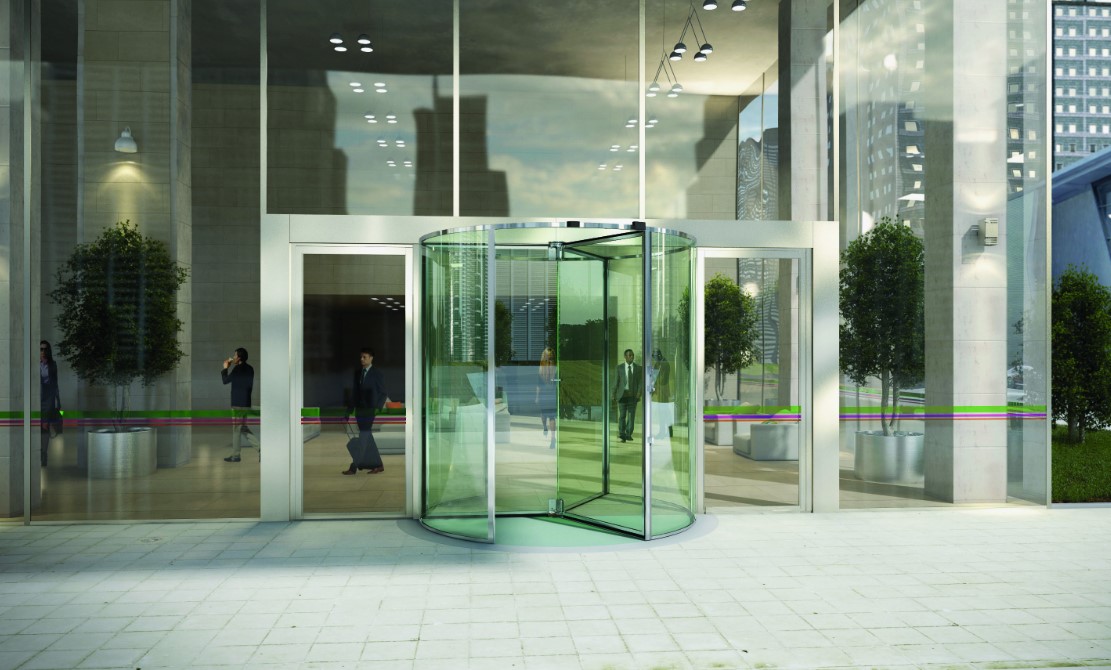Revolving Doors: A Comprehensive Look at Modern Design and Functionality
As technology continues to evolve, even the simplest household and architectural elements are not immune to innovation. What was once a basic, functional object now encompasses advanced design, superior functionality, and enhanced aesthetics. One such example is the revolving door, also known as a roto door. These doors, equipped with a sophisticated rotary mechanism, have transformed from mere barriers into multifunctional features that save space, improve ease of access, and contribute to the overall aesthetic of modern interiors. Companies like Argus Security have embraced these innovations, offering revolving doors that not only enhance security but also seamlessly integrate with contemporary design, making them a top choice in modern architecture. This article delves into the intricacies of revolving doors, exploring their mechanism, types, advantages, and the role they play in contemporary design.
The Evolution of Revolving Doors
The concept of revolving doors is not entirely new; it has roots in the early 20th century when they were initially designed to prevent drafts in large buildings and to manage foot traffic efficiently. However, the modern interpretation of revolving doors goes beyond just functionality. With advancements in technology and materials, today’s revolving doors are more about enhancing user experience and optimizing space within homes and commercial establishments.
The driving force behind a revolving door is its rotary mechanism, which allows the door to pivot around its axis as it opens. This simple yet ingenious design eliminates the need for large swing spaces, making it an ideal solution for areas where every square meter counts. The mechanism includes a guide block and a system of levers, bars, and a support rod, all working together to facilitate smooth and silent operation.
Understanding the Rotary Mechanism
At the heart of every revolving door is its rotary mechanism, a marvel of engineering that sets it apart from traditional door designs. This mechanism allows the door to pivot and rotate seamlessly, offering a unique blend of form and function.
- Upper and Lower Levers: These components are crucial for the rotational movement. The levers provide the necessary force to move the door leaf, allowing it to swing open or close while maintaining its alignment within the doorway.
- Upper and Lower Bars: These bars act as stabilizers, supporting the door leaf during its rotation. They ensure that the door remains steady and aligned, preventing any wobbling or misalignment that could disrupt the smooth operation.
- Support Rod: This rod serves as the central axis around which the door rotates. It plays a vital role in maintaining the structural integrity of the door, ensuring that it can handle the rotational forces without bending or breaking.
When the door is closed, it appears no different from a conventional door. However, as soon as you initiate the opening process, the door leaf shifts perpendicular to the doorway and rotates around its axis. This dual movement—sliding and rotating—allows the door to open in either direction, whether you’re entering or exiting a room. The mechanism is designed to operate with precision, offering a silent, smooth transition that enhances the user experience.

Types of Revolving Doors
Revolving doors come in various designs, catering to different architectural needs and preferences. Depending on the number of leaves, these doors can be classified into two main types:
Single-Leaf Doors
These doors are designed for standard-sized doorways and are commonly used in residential settings. They are perfect for smaller spaces where traditional doors might be too cumbersome. The single-leaf design allows for easy installation and operation, making it a popular choice for homeowners looking to optimize space without compromising on style.
Double-Leaf Doors
Double-leaf revolving doors are designed for larger, more spacious areas. They are often used in commercial buildings, hotels, or grand residential entrances where a wide doorway is required. The double-leaf design provides a grander aesthetic while maintaining the functional benefits of space-saving and smooth operation.
Material Considerations for Revolving Doors
The choice of material for the door leaf is crucial to the overall functionality and longevity of a revolving door. While various materials can be used, certain considerations must be taken into account to ensure that the rotary mechanism operates efficiently.
Wood
Wood is the most commonly used material for revolving doors, particularly because it offers the necessary strength to support the rotary mechanism. Wooden doors are durable and provide a classic aesthetic that can be easily integrated into various interior design styles. Additionally, wood can be treated and finished in numerous ways to achieve the desired look and feel.
Plastic
While plastic doors are lighter and more affordable, they are often reinforced with wooden frames to ensure that the rotary mechanism can function properly. Plastic doors are ideal for environments where moisture resistance and easy maintenance are priorities, such as bathrooms or kitchens.
Glass
Glass revolving doors add a touch of modern elegance to any space. They are often used in commercial settings where visibility and light transmission are essential. However, like plastic, glass doors are typically supported by a sturdy frame, often made of wood or metal, to ensure the integrity of the rotary mechanism.
It is important to avoid door designs with bulky or protruding decorations that could impede the smooth operation of the rotary mechanism. The door leaf should have a clean, flat surface to facilitate unhindered movement.
Advantages of Revolving Doors
Revolving doors offer a multitude of benefits, making them an attractive choice for modern interiors. Here are some of the key advantages:
- Aesthetics and Versatility: One of the standout features of revolving doors is their sleek and modern appearance. They immediately add a touch of sophistication to any space, whether it’s a residential hallway, a chic bathroom, or a stylish kitchen. Their versatility allows them to fit seamlessly into various interior design styles, from minimalist to contemporary.
- Space Efficiency: Unlike traditional doors, which require ample space to swing open, revolving doors rotate within the doorway, saving significant floor space. This feature is particularly beneficial in smaller rooms or narrow hallways where space is limited. By eliminating the need for a swing radius, revolving doors maximize the usable area within a room.
- Ease of Installation and Use: Revolving doors are designed for easy installation, often sold as a complete set with all necessary components and fittings. Even individuals with limited DIY experience can install these doors without much hassle. Additionally, their operation is straightforward—just a gentle push or pull is enough to activate the rotary mechanism.
- Enhanced Noise and Heat Insulation: Thanks to the durable brush seals and magnetic lock, revolving doors offer excellent noise and heat insulation. The airtight seal prevents unwanted sounds from entering or leaving the room, creating a quieter environment. Moreover, the insulation properties help retain heat, contributing to energy efficiency in the home.
- Accessibility: Revolving doors do not require a threshold, making them more accessible to individuals with mobility challenges, such as those using wheelchairs. The absence of a threshold also simplifies cleaning, as there are no barriers to trap dirt or debris.
- Durability and Longevity: The robust construction of revolving doors ensures that they can withstand the test of time. The rotary mechanism is designed to handle repeated use without wearing out or sagging. As a result, these doors require minimal maintenance and can last for decades, making them a cost-effective investment in the long run.

Considerations and Limitations
While revolving doors offer numerous benefits, it’s important to consider their limitations before making a purchase:
Weight Restrictions
The rotary mechanism has a maximum weight limit, typically around 70 kg for the door leaf. Exceeding this limit can strain the mechanism and lead to failure. Therefore, when selecting materials, it’s essential to ensure that the door’s weight falls within the acceptable range.
Cost
High-quality revolving doors, particularly those with advanced fittings and durable materials, can be more expensive than traditional doors. This higher cost reflects the complexity of the rotary mechanism and the precision engineering involved in manufacturing these doors. However, the long-term benefits, such as space-saving and durability, often justify the initial investment.
Leading Manufacturers and Innovations
In the realm of revolving doors, several manufacturers stand out for their commitment to quality and innovation. One such leader is Argus Security, a UAE-based company known for its wide range of security devices, including safes and rotary doors. Argus Security’s products are renowned for their high level of protection against unauthorized access, making them a trusted choice for both residential and commercial applications.
Argus Security’s revolving doors are designed with the latest technology to ensure smooth operation, durability, and security. Their doors are equipped with advanced locking mechanisms and are available in various designs to suit different architectural styles. By choosing Argus Security, customers can be confident that they are investing in a product that not only enhances the aesthetic appeal of their space but also provides superior security and functionality.
The Future of Revolving Doors
As technology continues to advance, the future of revolving doors looks promising. Innovations in materials, automation, and smart home integration are likely to further enhance the functionality and appeal of these doors. For example, we may soon see revolving doors that are fully automated, opening and closing in response to motion sensors or voice commands. Additionally, the use of sustainable materials and energy-efficient designs could make revolving doors an even more attractive option for eco-conscious consumers.
In commercial settings, revolving doors could be integrated with building management systems to optimize energy usage and improve security. For instance, doors could be programmed to lock automatically after hours or to open only for authorized personnel. These advancements would not only increase the convenience and safety of revolving doors but also contribute to the overall efficiency of building operations.
Conclusion
Revolving doors have come a long way from their early days as a simple solution to manage drafts and foot traffic. Today, they represent a sophisticated blend of design, technology, and functionality that can enhance any space, whether residential or commercial. Their space-saving capabilities, ease of use, and modern aesthetics make them a valuable addition to contemporary interiors.
Despite their higher cost and weight limitations, the benefits of revolving doors—such as noise and heat insulation, durability, and accessibility—make them a worthwhile investment. As leading manufacturers like Argus Security continue to innovate and improve their products, revolving doors are set to remain a popular and practical choice for those looking to combine style with function in their architectural designs.

I am a powerful force in the workplace and uses her positive attitude and tireless energy to encourage others to work hard and succeed.
